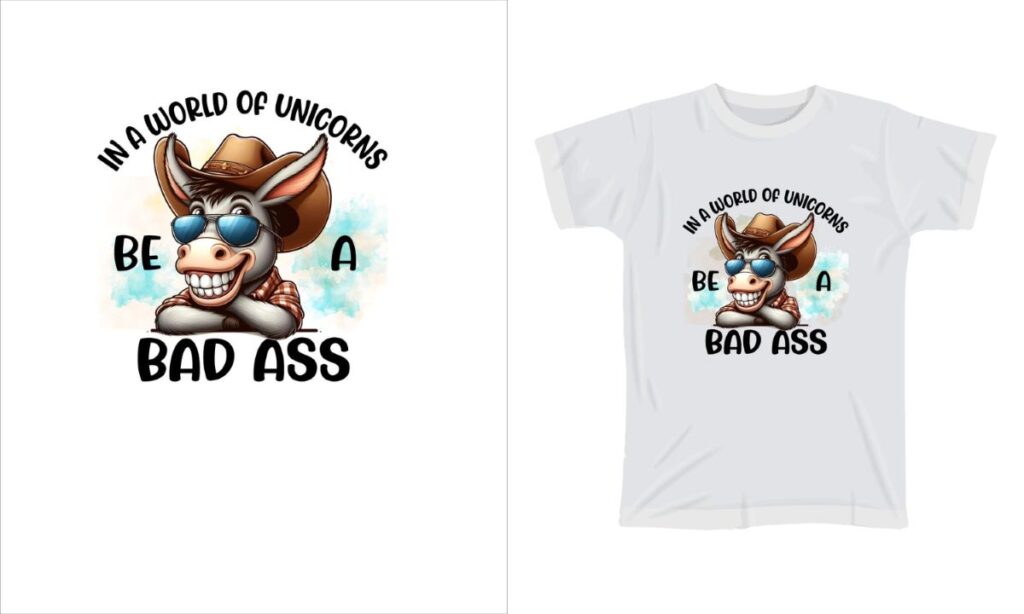UV DTF materials form the backbone of vibrant, durable transfers for apparel and merchandise. Choosing the right UV DTF films, UV DTF inks, and DTF fabrics is key to maximizing color fidelity and durability. UV-curable inks for DTF technology cure rapidly under UV exposure, supporting fast production cycles. A film’s thickness, release layer, and ink-receptive coating influence edge sharpness and color accuracy, essentially the DTF transfer film that carries the design. In practice, testing small batches helps you balance image quality with substrate compatibility and workflow efficiency.
In practice, the key inputs for UV-based transfer printing are three pillars: films, inks, and fabrics. For printers seeking crisp graphics and durable wear, the coating on the transfer media, the pigment or dye system, and the fabric base weight are the levers to tune. That means focusing on carrier films, UV-curable ink chemistry, and substrate choice as a trio that determines brightness, color stability, and wash resistance. Trying different media types – clear PET carriers, varied coatings, and pre-treated textiles – helps you match performance with production speed. Thinking in terms of media, inks, and substrates rather than a single supplier helps you build a flexible, scalable workflow for diverse projects.
UV DTF materials Demystified: Films, Inks, and Fabrics
UV DTF materials are the foundation of vibrant, durable transfers. The three pillars—UV DTF films, UV DTF inks, and DTF fabrics—work together to determine color fidelity, edge sharpness, and wash resistance. When selecting materials, consider how each component interacts with your printer, curing unit, and substrate, and how your workflow can be optimized to minimize waste and reprints.
Understanding the role of UV DTF films—the carrier and transfer media—and the transfer film surface helps you predict ink deposition and image stability under UV exposure. Pair films with UV curable inks for DTF and compatible fabrics to maximize color density and detail retention, while ensuring the release properties of the DTF transfer film to avoid ghosting or edge halos.
By mastering these three pillars, you can tailor your material choices to your production goals, whether you print small runs with tight color matching or large batches that demand repeatable results across lots. A principled materials approach reduces waste, accelerates setup, and improves consistency across projects.
Choosing UV DTF Films: Thickness, Coatings, and Transfer Reliability
Film thickness, often measured in microns, and surface coating influence how much ink the substrate accepts, how well heat is conducted, and how stable the print remains during curing. A film with a consistent carrier and a reliable adhesive or heat-release layer helps preserve edge definition and prevent curling after bonding to the fabric. Consider the film’s dimensional stability under UV exposure and its compatibility with your transfer process.
Practical testing with a small batch of films on your target fabrics and with your chosen UV DTF inks is essential. Evaluate color reach, edge sharpness, and smear under simulated production conditions. Also assess how the film interacts with the DTF transfer film to ensure a clean release and minimal ghosting during the final transfer.
UV DTF Inks: Achieving Brightness, Opacity, and Colorfastness
UV DTF inks drive the color gamut, brightness, and durability of the final transfer. Pigment-based UV inks provide strong opacity and outdoor wash resistance, while dye-based formulations can deliver vivid hues on light backgrounds but may need additional protection for longevity. Important ink attributes include pigment load, particle size, cure compatibility with your UV lamp, and viscosity controlling smooth coverage on fabrics.
Make sure your inks are formulated for UV DTF applications and that your printer’s curing unit is calibrated to the ink’s cure parameters. Proper curing avoids tackiness or sticking issues after transfer and ensures consistent gloss and color fidelity across runs. When comparing UV-curable inks for DTF versus traditional solvent inks, the UV family usually delivers faster production and better durability with the right film and fabric pairing.
DTF Fabrics and Compatibility: Substrates that Boost Vibrancy
Fabric choice is a major determinant of print quality and feel. 100% polyester fabrics typically offer the smoothest surface, strong color uptake, and durable transfers, while cotton blends can yield a softer hand but may require pre-treatment or optimized ink formulations to reach equivalent vibrancy. When evaluating DTF fabrics, consider base material, GSM, weave, and how these factors interact with the ink chemistry.
For UV DTF materials, fabric compatibility is essential. Testing multiple fabrics with your chosen UV DTF films and inks reveals how well color saturates, how edges hold under wear, and whether the fabric texture interferes with printing fidelity. Keep a log of fabric types paired with films and inks to build a reusable reference library for future projects.
Pairing Films, Inks, and Fabrics for Best Results
A practical workflow starts with selecting a UV DTF film that matches your print resolution and transfer clarity, followed by UV DTF inks that complement the film and substrate. If you work with bright, saturated colors on light backgrounds, pigment-based inks with strong opacity can help achieve solid coverage, while keeping curing parameters aligned with your lamp’s wavelength and intensity.
Finally, pick fabrics that respond well to your film-ink combination. Harmony among the film, inks, and fabric is essential for color accuracy and long-term durability. Document each trial and build a reference log so you can reproduce successful results and scale production with confidence.
Practical Testing and Optimization: A Workflow for UV DTF Materials
Quality and durability in UV DTF projects come from a repeatable test protocol. Start with a small batch to gauge color reach, edge sharpness, adhesion, and wash-fastness after curing. Store films flat, protect inks from light exposure, and maintain your curing system according to the ink manufacturer’s guidelines to prevent under- or over-curing.
Avoid common pitfalls such as mismatching film thickness with fabric stiffness, under-curing, or inconsistent fabric pre-treatment. By maintaining a material trial log for film, ink, and fabric combinations, you can quickly identify issues, optimize settings, and reduce waste across production runs.
Frequently Asked Questions
What are UV DTF materials and what are the three pillars that determine print quality (UV DTF films, UV DTF inks, and DTF fabrics)?
UV DTF materials refer to the essential inputs for UV DTF printing: UV DTF films as the carrier, UV DTF inks as the colorants cured by UV light, and DTF fabrics as the substrate. Together they affect color accuracy, edge sharpness, and durability. Testing different combinations helps optimize performance for your printer and substrate.
How should I choose the right UV DTF films for reliable transfers, and where does the DTF transfer film come into play?
When selecting UV DTF films, look for consistent thickness and flatness, a reliable release layer, and ink receptivity to ensure clean transfers and sharp details. Ensure the film is compatible with your UV DTF inks and your fabric type, considering also the DTF transfer film’s adhesion characteristics. Run small-scale tests to verify color reach and edge definition.
What should I know about UV curable inks for DTF to optimize color, durability, and curing consistency?
UV curable inks for DTF should match your printer’s curing unit in wavelength and intensity, delivering strong colorfastness and opacity where needed. Choose inks formulated for UV DTF applications to reduce tackiness and improve wash-fastness on fabrics. Calibrate the UV lamp to ensure a consistent cure and avoid under- or over-curing.
How does fabric choice affect UV DTF material performance and result in vibrant transfers?
DTF fabrics influence vibrancy, texture, and durability. 100% polyester tends to yield brighter colors, while cotton blends offer a softer hand but may need pre-treatment. Match fabric GSM and weave to your film and ink system, and test different fabrics with your UV DTF materials to build a reference library.
What common pitfalls occur when pairing UV DTF films, UV DTF inks, and DTF fabrics, and how can I avoid them?
Common pitfalls include mismatching film thickness with fabric stiffness, under- or over-curing inks, and insufficient pre-treatment. Always test film, ink, and fabric together on your printer with small runs, and document the results to support reproducibility.
How can I optimize a workflow for UV DTF materials to improve color fidelity and production speed?
To optimize workflow, establish a repeatable test protocol for film–ink–fabric combinations, calibrate curing settings, and store materials properly. Document printer settings and material choices to reproduce successful outcomes, and regularly test samples before production.
| Component / Pillar | What it is | Key points & Practical tips |
|---|---|---|
| Overview | UV DTF materials are the essential inputs for image quality and transfer reliability, organized into three pillars: films, inks, and fabrics. | Choosing the right combination reduces waste, speeds workflows, and improves consistency. |
| UV DTF Films | Carrier and transfer media (clear PET films and release carriers). Must withstand heat and UV exposure and remain dimensionally stable. |
|
| UV DTF Inks | UV-curable inks cured by ultraviolet light; affect color gamut, brightness, gloss, and wash-fastness. Pigment-based inks offer outdoor durability and opacity; dye-based can yield bright colors but may require more durability considerations. |
|
| DTF Fabrics | Substrates receiving the transfer; fabric choice influences print quality, color rendition, and the feel of the transfer. Polyester is common; cotton blends can be softer but may need treatments for vibrancy. |
|
| Choosing UV DTF materials | Align printer capabilities with the UV curing system; ensure film, inks, and fabrics work together for your printer. |
|
| Quality & Durability Tips | Proper storage of UV DTF materials and maintaining the curing system improve long-term results. |
|
| Common Pitfalls | Mismatching film thickness with fabric stiffness; improper curing can cause tackiness or embrittlement; inconsistent fabric pre-treatment reduces color consistency. |
|
Summary
UV DTF materials are the foundation for achieving reliable, vibrant transfers across apparel and other substrates. By selecting compatible UV DTF films, UV DTF inks, and fabrics and by testing combinations to optimize color, adhesion, and durability, you can build a robust, repeatable workflow that scales with your production needs. Document curing settings and material choices to reproduce successful outcomes, reduce waste, and speed up production while maintaining high quality. UV DTF materials empower printers to deliver durable, color-accurate transfers that stand up to washing, sunlight, and wear, making UV DTF a versatile choice for a wide range of substrates and applications.



